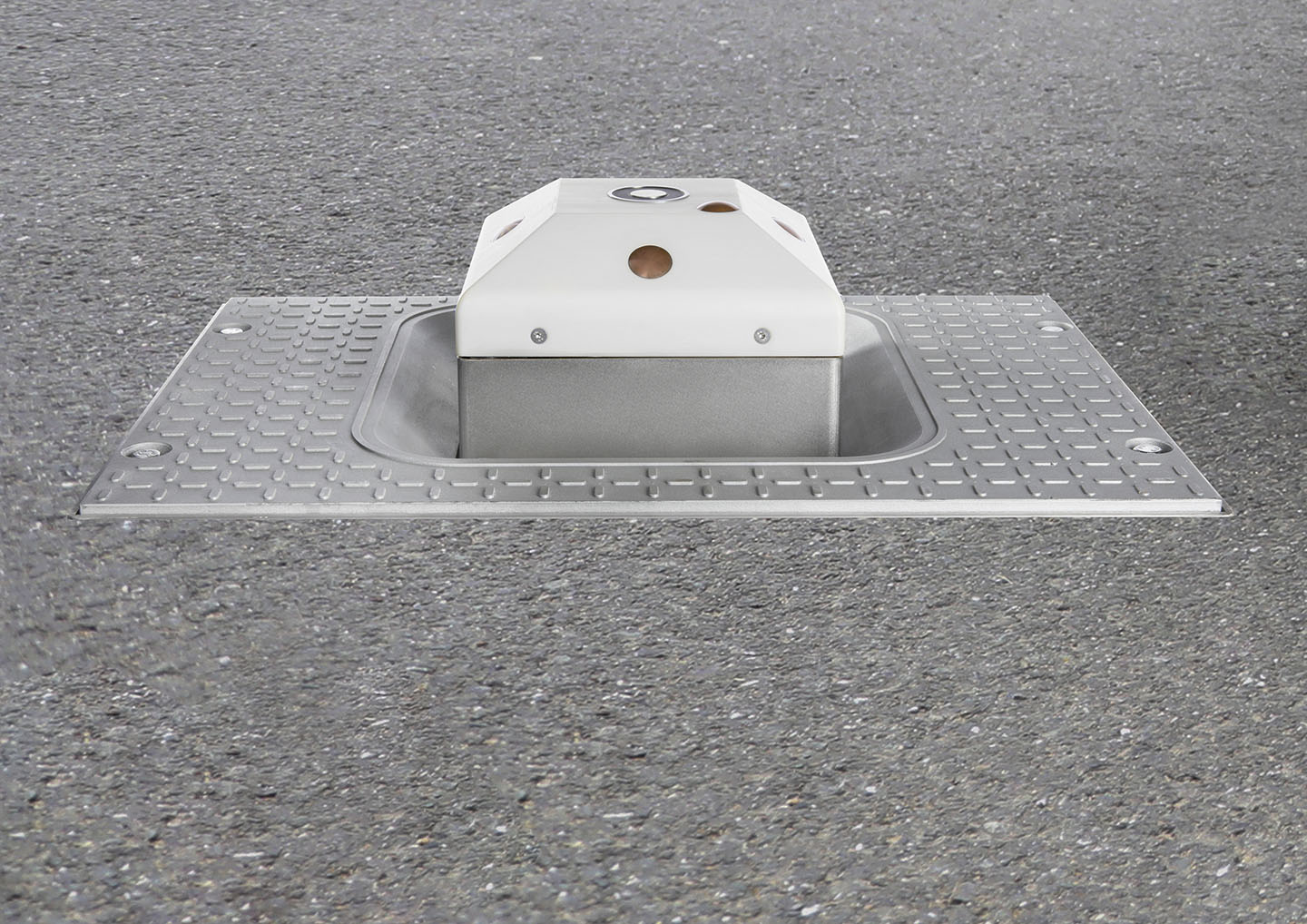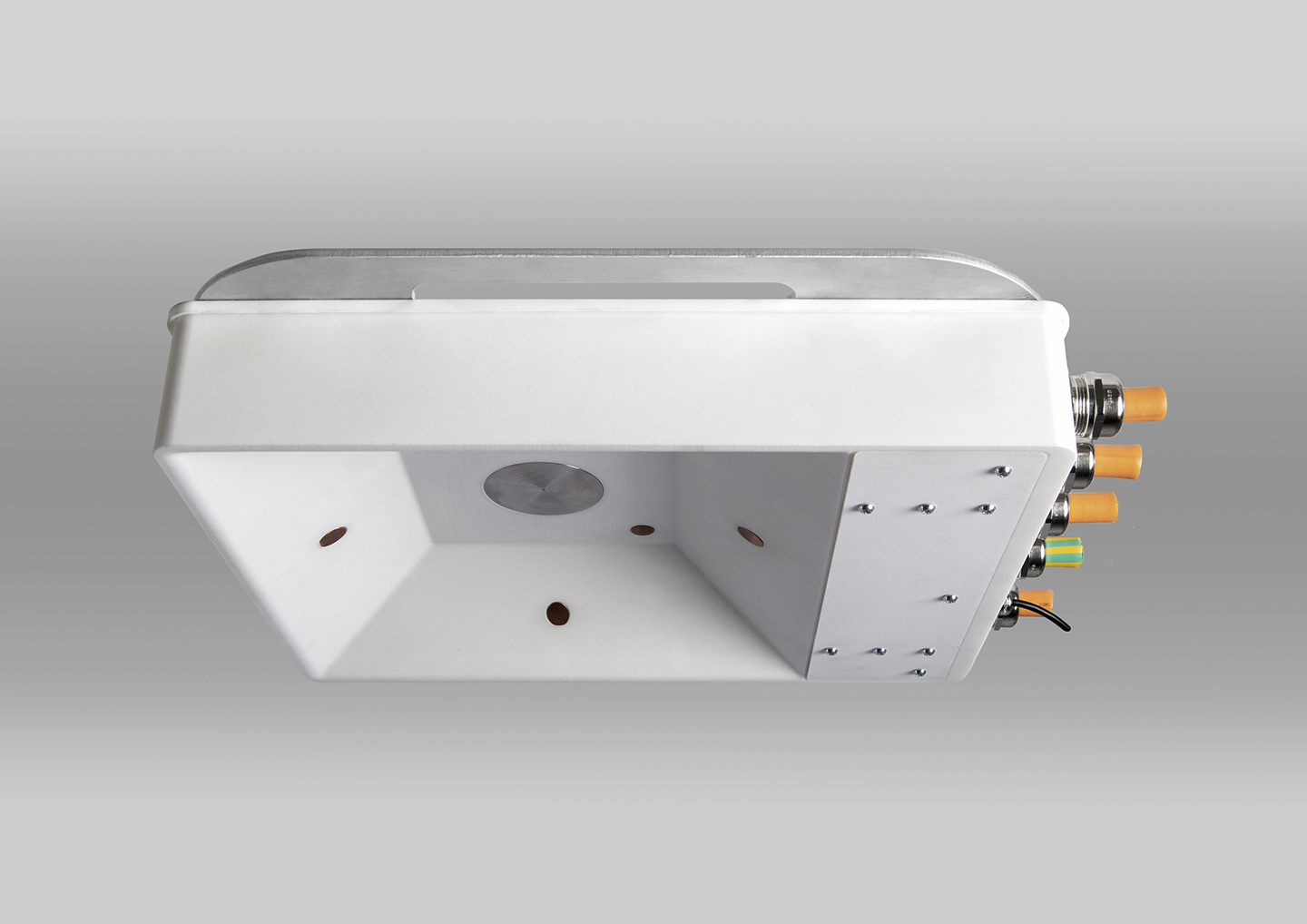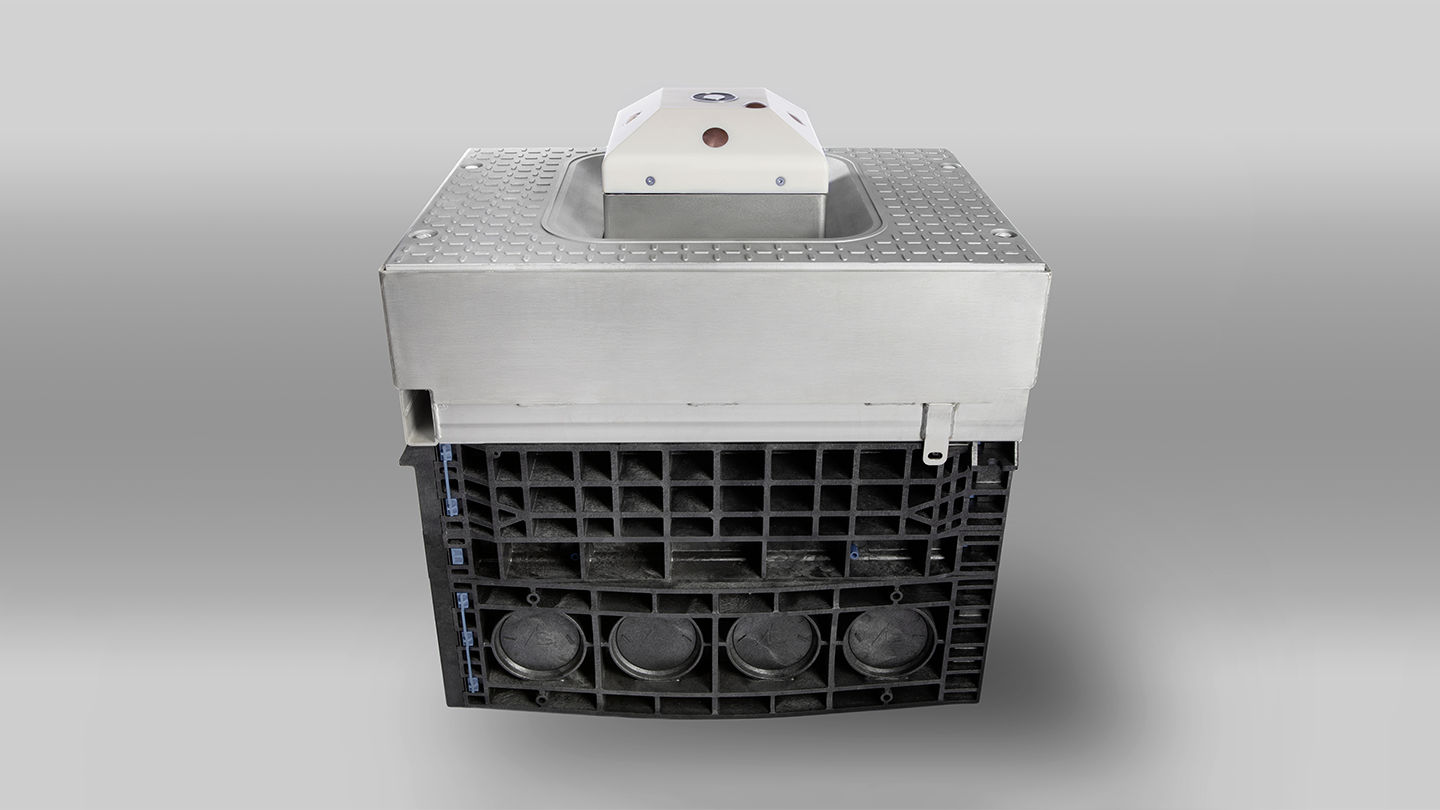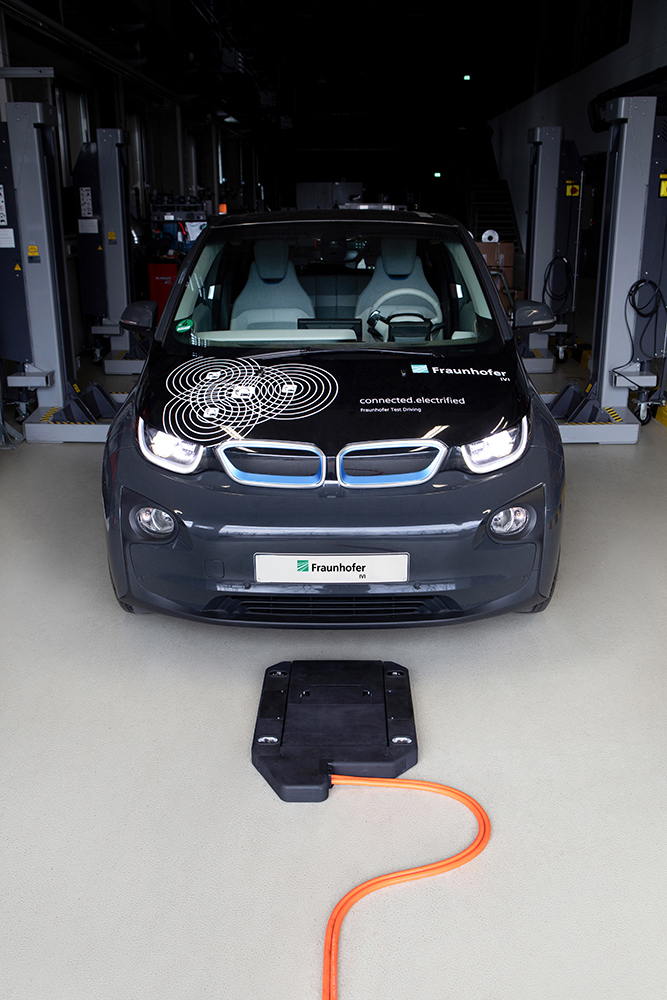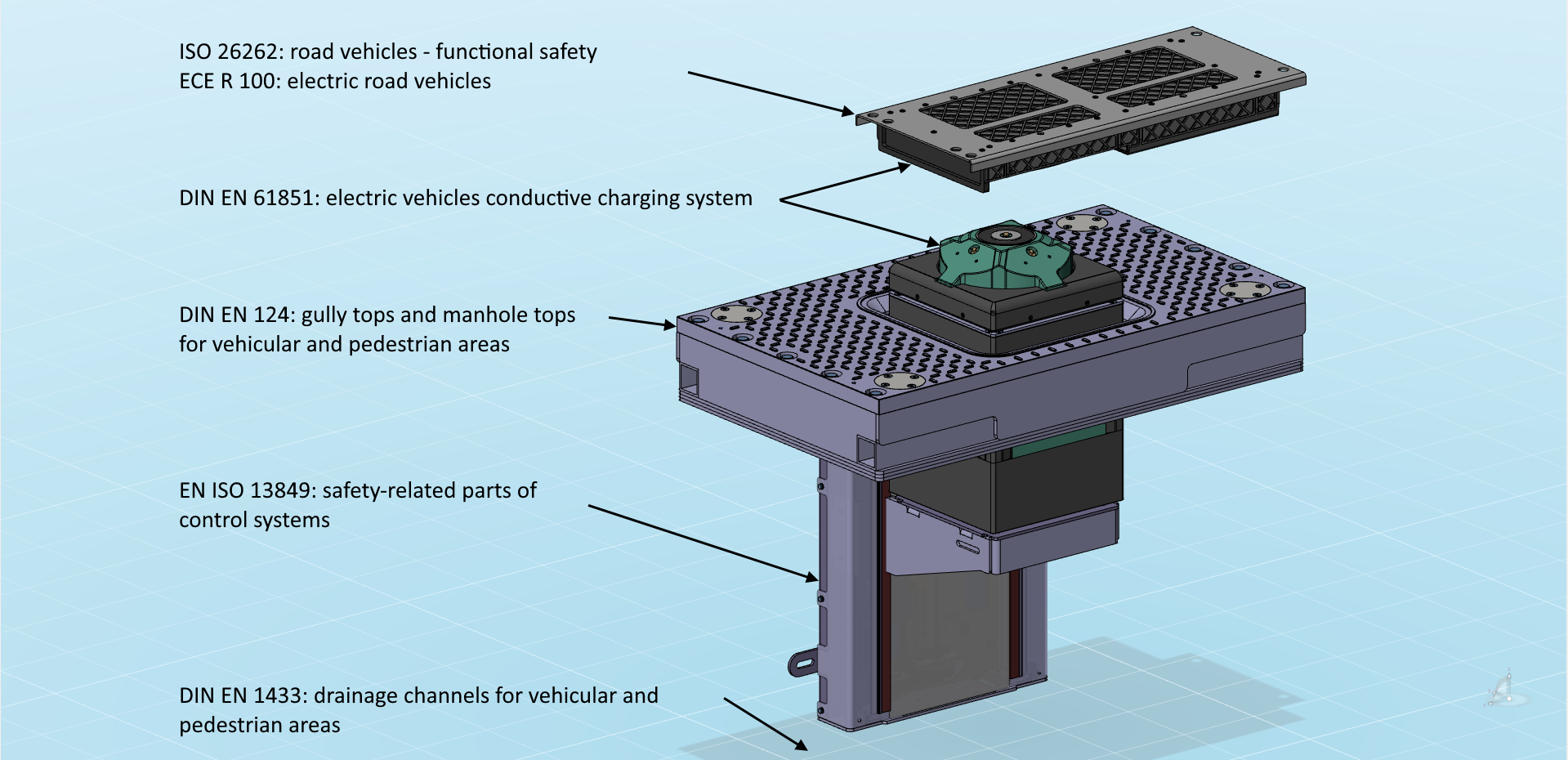At present, the market offers different charging systems for electric vehicles. If large energy amounts are to be transmitted, only conductive, i. e. contact-based systems (charging cable and plug), can be applied. These flexible solutions limit the system‘s charging capacity to approx. 150 to 200 kW and are therefore not suitable for fast-charging systems with higher performance.
The Fraunhofer IVI has developed a fully automated, reliable and safe charging system for this application scenario that overcomes the performance restrictions of conventional plug-and-cable combinations.
With the help of this new technology, it is possible to transmit one megawatt to electric passenger cars and two megawatts to electric trucks. All this is done fully automatically, safely and reliably without the involvement of a human operator.
The system has
- merely one interface for both fast and slow charging,
- no charging capacity limitations and
- optimal operating comfort through full automation.
The use of charging cables will be no longer necessary.
